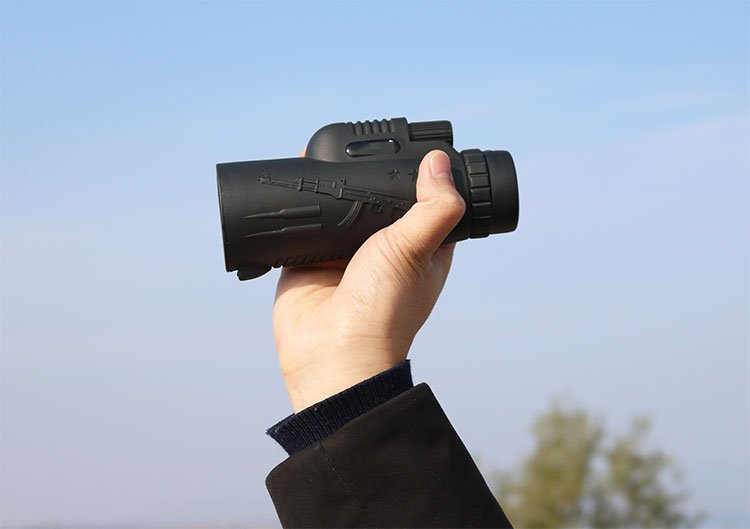Astronomy enthusiasts are basically divided into two categories, one is the photography school (marked by the large-diameter reflective Newton or achromatic ED refraction lens tube and the advanced SLR camera automatically guided to the equatorial mount), and the other is the observation school ( It is marked by having a large-diameter double-view latitude and longitude platform and a sturdy tripod). No matter how obsessed with their own photography or deep space exploration, these two types of people are also loyal stargazers with both hands in their hands. So what should our ideal handheld stargazer look like?
1. Aperture and magnification:
Before deciding on the aperture and magnification, we want to explain to everyone a point of view, which is one of the souls of the handheld stargazing mirror. Brightness (the so-called degree of transparency)!
Even in a city with a lot of light, if we look up at the night sky with a telescope, the night sky with a few stars (or no stars at all) that were originally sparse, suddenly becomes more stars. Those faint small star points became visible under the magnification of the telescope. The higher the brightness of the telescope, the more small stars we can see. Therefore, the concept of maximizing higher brightness is always one of the themes of special mirrors for stargazing.
At this time, we have to introduce a very critical parameter, the exit pupil diameter. We know that the pupil diameter of an adult eye is 7 millimeters. However, recent studies have shown that after entering middle age, the pupil diameter will gradually shrink with age. It is said that the pupil diameter of middle-aged people will shrink by 1 millimeter every 10 years. We know that it is meaningless if the exit pupil diameter of the telescope is greater than 7 mm. So the stargazers that have left a reputation in history are almost all of the same size 7×50. Why is this size? Because the exit pupil diameter=the effective clear aperture of the objective lens/magnification, the exit pupil diameter of 7×50 is 50/7=7.14mm, so that the brightness is guaranteed in the specification.
I think for Asians, there should be two ideal handheld stargazing mirrors, one is 7×50 and the other is 10×50! Of course, young people choose 7x lens, if you are over middle-aged, I suggest you consider 10x Because the pupil diameter of a person will gradually shrink and become smaller after middle age, a relatively large exit pupil diameter of the telescope is meaningless for such a group of people. Anyway, there is only one principle, under the premise of maximizing the brightness.
2. Structure
For decades, the Porro prism has almost been a dedicated structure for stargazing mirrors. Why? In addition to the cost price, there is another reason that the roof prism product has a poor suppression effect on the scattered light of the star point. But I believe that with the improvement and development of phase film and other technologies, the straight tube shape of the roof prism will be able to shake without any suspense and even take the dominance of the Porro prism in the stargazers with its excellent portability and lightness. . In addition, there is a kind of prism called Abbe prism. The structure of the prism makes it unnecessary to coat the reflective surface with a reflective film. Because of the principle of total reflection of light, it has the same reflectivity as Porro prism. I think it can be used for stargazing and the future is boundless.
3.The angle of view
Whether it is 7 times or 10 times, we all hope that their visual field of view is 60 to 65 degrees, so that the sense of openness is enjoyable. Therefore, with 7 times the double vision, I hope its field of view is above 9 degrees. With a 10x double-looking stargazing mirror, we hope that the angle of view is 6.5 degrees before and after. Only in this way can we bring us that shocking sense of presence! It’s not that the stars are in front of us, but the sense of presence as if we are in the ocean of stars. That feeling, once you have it, you will never forget it again.
4. Good image range and peripheral distortion
Speaking of handheld stargazing, what is the fundamental difference between it and the high-power large astronomical telescopes on the shelf? I think the most fundamental difference lies in the object being viewed. Some people may be very strange, don’t they all look at the stars in the sky? Where is it different? In fact, what a high-power astronomical telescope looks at is a “point image”, which is to enlarge a very small point image. However, holding the double-view of the sky is a “face image”. A face made up of many, many dots (cute stars). Therefore, as long as these small dots don’t collapse obviously, the peripheral distortion will not have much impact even if it is obvious (that is, the mutual position of the dots has changed a little). Therefore, the good image range of an ideal handheld stargazer should be at least more than 50%. However, the peripheral distortion of the image surface should be reduced.

